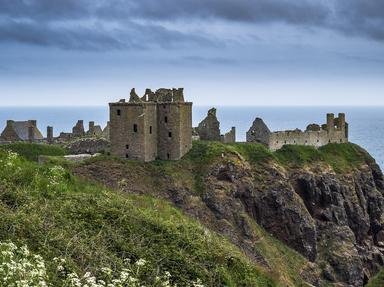Quiz Answer Key and Fun Facts
1. The Old Calton Burial Ground is the last resting place of many well known Scottish figures including philosopher David Hume and publisher William Blackwood. Also, a statue of which American president lies among the tombstones?
2. What was, or is, the Edinburgh landmark known as the "Mound?"
3. Certain older Edinburgh churchyards have prominent watchtowers looking over them. What were these towers built to protect against?
4. Edinburgh University is one of the oldest in the UK, dating from 1583. It was one of five universities in Scotland during a period when England had only Oxford and Cambridge. Which American universities were founded by graduates of Scottish Universities, including Edinburgh?
5. Bruntsfield Links is a park in the middle of Edinburgh. It is one of the oldest known locations to be associated with one of Scotland's, and the world's, most popular pastimes. Which?
6. Which famous author studied medicine in Edinburgh, and later used the forensic knowledge acquired there to create one of literature's more famous detectives?
7. Edinburgh now has several universities, but the "second" one, founded in 1821, is named for which two Scottish notables?
8. The visit of King George IV to Edinburgh in 1822 was the first visit of a reigning monarch to Scotland since 1650. Which leading Scottish personality orchestrated the extravagantly "historical" celebrations, which sparked a mania for tartan and clan romance which has never really died down since?
9. The Canongate Kirk is one of Edinburgh's oldest churches. Whose gravestone in the churchyard there inspired one of Charles Dickens's most notable characters?
10. Edinburgh became famous in the 18th and 19th centuries as a centre for publishing and bookselling. A leading light of the Edinburgh book trade was Archibald Constable. Which of the following famous literary works did he publish?
Source: Author
tartandisco
This quiz was reviewed by FunTrivia editor
Exit10 before going online.
Any errors found in FunTrivia content are routinely corrected through our feedback system.


